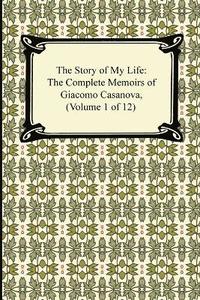Casanova Life
The Italian adventurer Giacomo Jacopo Girolamo Casanova de Seingalt (1725-1798) is best known for his memoirs, which are a most revealing record of 18th-century European society.
The first child of an actor and actress, Casanova was born in Venice. He set out to play the comedy of life with a short role as an ecclesiastic but was expelled from the seminary in 1743. He found refuge in Rome with Cardinal Acquaviva, the first of his many powerful protectors. By 1745 he had returned to Venice, where he practiced magic. Forced to flee prosecution for engaging in the black arts, Casanova drifted from city to city. In Lyons in 1750 he joined the Free Masons, an allegiance that gave him support in the noble, free thinking circles of cosmopolitan Europe. Gambling, profiteering, and amorous activities marked his first stay in Paris (1750-1753). His luck held until 1755, when he was imprisoned in Venice for 'black magic, licentiousness, and atheism.' His spectacular escape is chronicled in the only portion of his memoirs to appear during his lifetime (1788).
The years 1756-1763 brought Casanova his most brilliant successes in a society dedicated to games of love and chance. Voltaire, whom he met briefly, judged him to be a 'mixture of science and imposture,' a suspect combination which nevertheless brought Casanova in contact with Frederick II and Catherine the Great.
The Weeknd headlines Super Bowl halftime show; Jailed rapper Casanova facing disciplinary charges over dance challenge video; Stormy Daniels and Michael Cohen, once foes, talk Trump. Giacomo Casanova (1725-1798) was born in Venice, the son of actors who wanted him to become a priest. Instead he had numerous occupations, and is remembered as one of history's great lovers. Stephen Satarelli is a poet and translator of Italian and French literary works. Sophie Hawes is an artist, printmaker, and translator.
Casanova himself divided his life into 'three acts of a comedy.' The second, which he thought of as lasting from 1763 to 1783, was less droll than the first. Protectors were less willing, and as the adventurer's brilliance faded, his charlatanism became more evident. From 1774 to 1782 Casanova added to his repertoire the role of 'secret agent' for the Republic of Venice, but he was less a spy than an informer.

Again obliged to leave Venice, Casanova began the third act of his comedy penniless and on the road. But in 1785 he gained the protection of the Count of Waldstein, in whose château at Dux (Bohemia) he stayed until his death in 1798. There he wrote his celebrated History of My Life, ending with the events of 1774, after which he had 'only sad things to tell.' Written in sometimes imperfect French, this work moves rapidly and frankly through vast amounts of personal and social detail. Besides tales of the 122 women whose favors he claims to have enjoyed, Casanova offers a chronicle of social extravagance and decline and a vision of Europe as complex and colorful as the bawdy, elegant, naively rational, desperately pretentious, and comic figure of 'Seingalt' himself.

Casanova's writings also include miscellaneous gallant verse, several treatises on mathematics, a three-volume refutation of Amelot de la Houssaye's history of Venetian government (1769), a translation of the Iliad (1775), and a five-volume novel of fantastic adventure to the center of the earth, Icosameron (1788).

Further Reading on Giacomo Jacopo Girolamo Casanova de Seinglat
Long limited to bowdlerized editions derived from a first German translation of the manuscript (acquired by Brockhaus in 1821), Casanova's History of My Life may now be read in a faithful translation by Willard R. Trask (4 vols., 1966-1967). The dean of Casanova scholars, James Rives Childes, wrote the definitive Casanova: A Biography (1961). The richly illustrated book by John Masters, Casanova (1969), provides valuable evocations of his life and times.

Additional Biography Sources
Casanova History Of My Life
Buck, Mitchell S. (Mitchell Starrett), b. 1887., The life of Casanova from 1774 to 1798: a supplement to the Memoirs, Brooklyn: Haskell House, 1977.
Casanova, Giacomo, The life and memoirs of Casanova, New York, N.Y.: Da Capo Press, 1984.
Childs, J. Rives (James Rives), Casanova, a new perspective, New York: Paragon House Publishers, 1988.
Ricci, Seymour de, Jacques Casanova de Seingalt: an address to the Philobiblon Club of Philadelphia, 24 May 1923, Norwood, Pa.: Norwood Editions, 1976.
Roustang, Francois., The quadrille of gender: Casanova's 'Memoirs,' Stanford, Calif.: Stanford University Press, 1988.
… to the world of Giacomo Casanova …
the world of an extraordinary life that was much more than the romantic exploits of film legend
Comixology
Casanova Lifetime
You can read ‘Casanova in Paris’ on our site for free. If you’re in a position to buy it online, though, it would be a great way to support us.
read moreCasanova in Paris: The Shadows of the King - Part 1
A graphic novel in twelve chapters, freely available here
read moreBlog / Latest News
Blogs on the creation of ‘Casanova in Paris’, the life of Casanova and the history of the time (with a special focus on Venice and Paris)
read moreCasanova in Paris: The Shadows of the King - Part 1
Central to our site is a 248-page graphic novel. If you wanted to put it into a box I suppose you could call it historical fiction (with a mix of murder, politics, religion, espionage, biography and romance). Although the story is fictional, it’s placed within a framework and chronology of events that did exist. Most of the characters were real people. We’ve gone to reasonable lengths not to contradict what is known about Casanova and the history of the time although we have imagined some alternative possibilities. The artwork, by the way, in this age of graphic software, is pretty much all hand-drawn.
As well as the graphic novel, the site contains a wide range of articles about the life of Casanova himself and the social and political background of the period as well as numerous blogs over half of which are historically themed. Each article is linked to an accompanying Pinterest page. Additional information and resources about Casanova and his times are also available on our blog.
Casanova Like
Our idea is to build up both sides of the site – the story-telling side and the history side. Along with the graphic novel itself, we would like to tell other stand-alone stories, separate to the novel but linked to its various characters. As far as the articles are concerned, needless to say the opportunities are unlimited. Fingers crossed, we would like the site eventually to become a genuinely valuable resource for anyone interested in Casanova or the political and social history of eighteenth-century Europe.
The joy of developing a website such as this is the flexibility and creative independence it gives to us as well as the possibility, if the opportunity arises, to collaborate with other writers, artists and maybe even historians.



